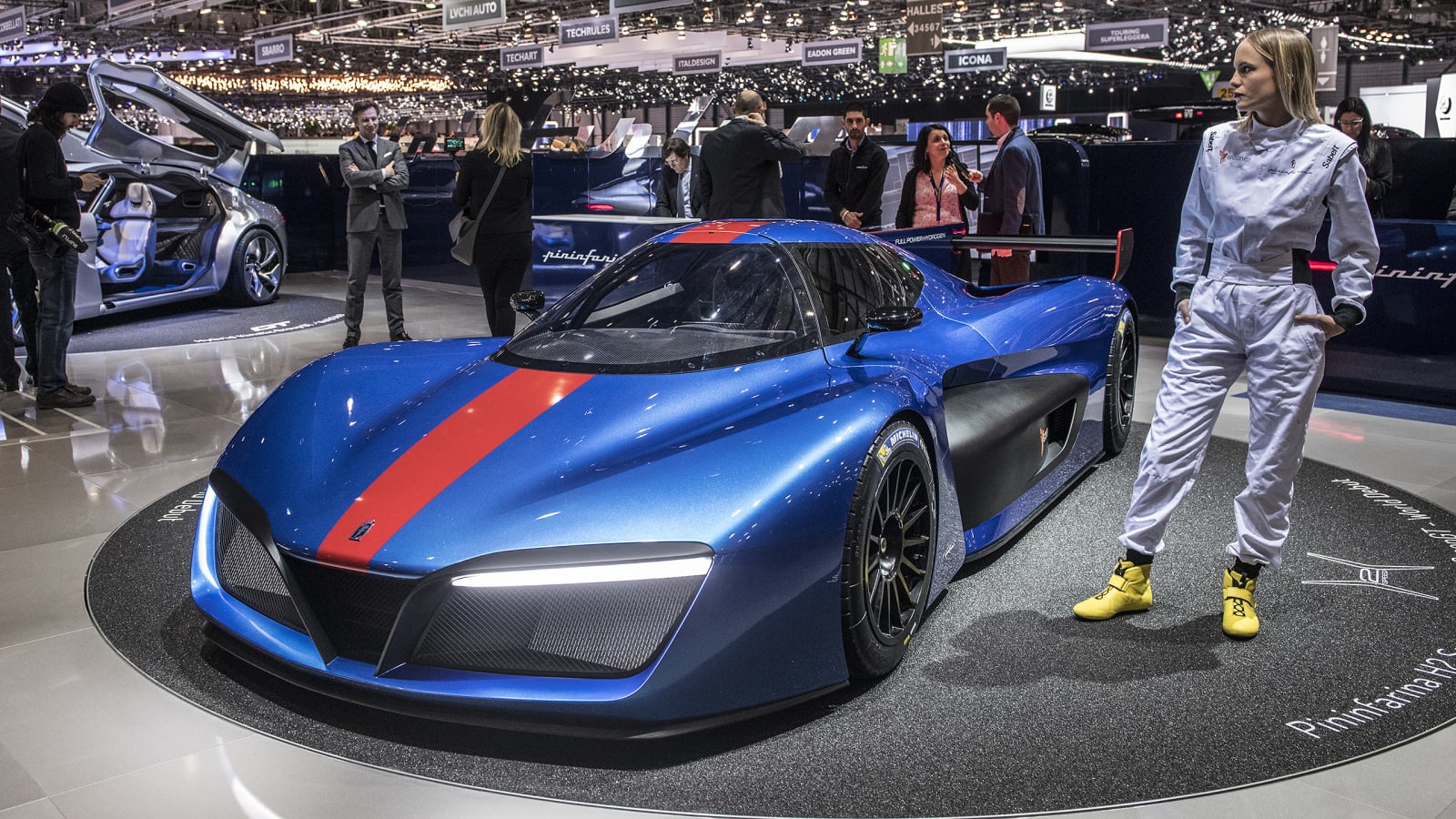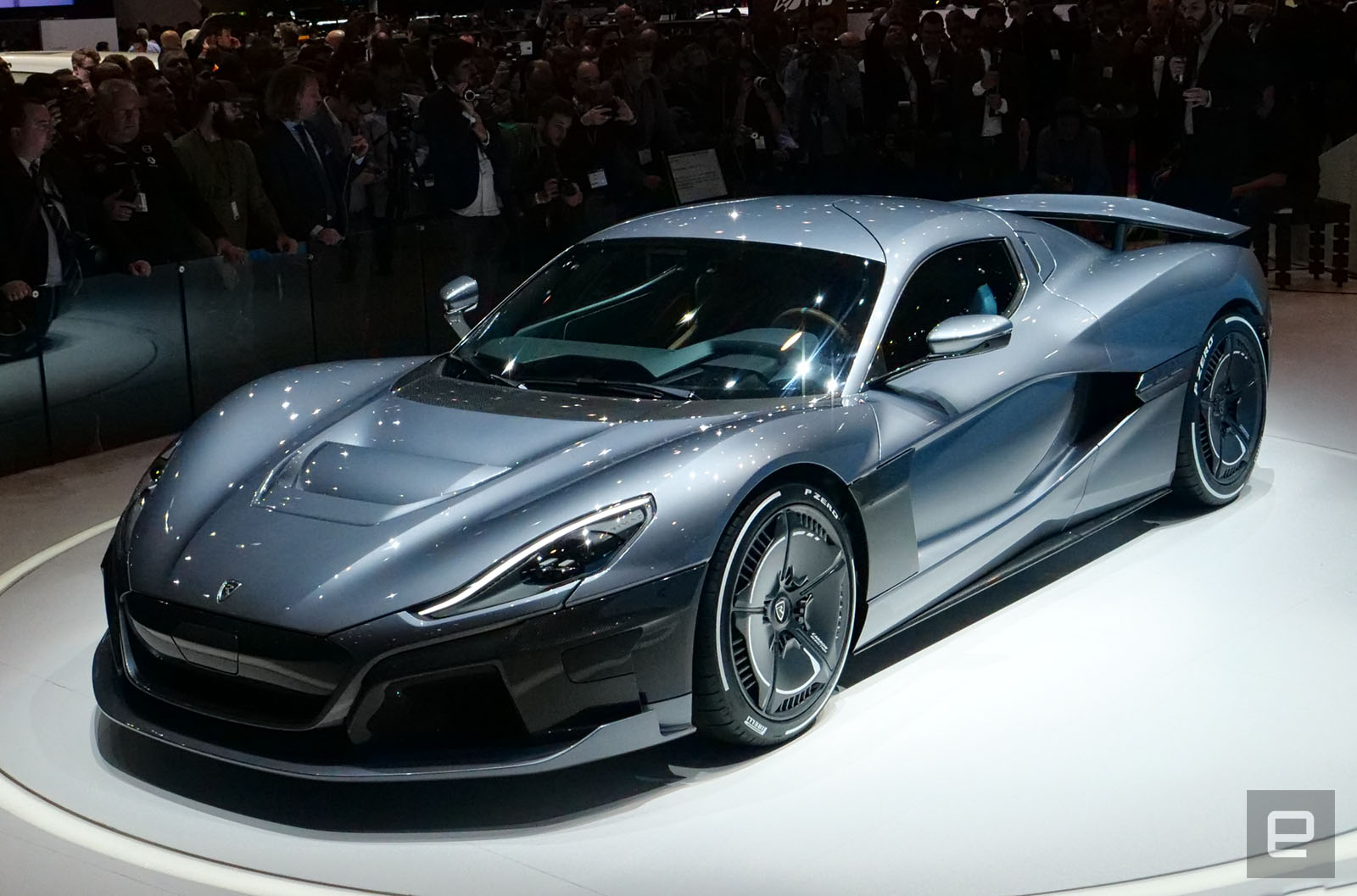Tag Archives: rimac
This Rimac Cyberbike channels the Tesla Cybertruck’s charm… without those breakable windows

More than being edgy, the Tesla Cybertruck was unconventional. Now I’ve always voiced my disdain for the Cybertruck’s design… but that doesn’t mean I hate it as a concept. I just believe it’s a little too absurd for a car that is designed for sale. That being said, if Elon tweeted the Cybertruck design as a cool designer-made concept, I’d definitely appreciate it for its game-changing design. That being said, the Cybertruck has also sparked its fair share of design concepts created using the low-poly design language as inspiration… and I’ll be honest. Some of them are pretty dope.
Take for instance the Rimac 2080 Hyper Cyber. Designed as a part of Rimac’s Design Challenge on Instagram, the Hyper Cyber is an edgy, retro-techno-punkish bike with a low-poly body in the signature metallic finish. The bike sports an unusual seat design that’s molded in a single piece, with negative spaces that give it a cushioning effect, and quite like the Cybertruck, it’s missing rearview mirrors too. That being said, it does come with a traditional-looking fuel tank, although that could just be a power inlet for charging… and there’s a distinct lack of cracked glass surfaces too, a detail whose absence I surely can appreciate!
Designer: 3Dmente Digital




The Rimac Scalatan is a stunning concept car with a 3D-printed chassis that ‘breathes oxygen’
Built for the year 2080, the Rimac Scalatan concept by Max Schneider gives us a unique window into what our world and the transport industry could look like over half a century from now. Known for their advanced hypercars powered by cutting-edge innovations and technology, Rimac’s brand image literally screams futuristic… and the Scalatan concept capitalizes on that, with a combination of features that make it incredibly enticing. The car comes with a stunningly aerodynamic carbon-nanotube graphene outer surface that sits coolly on top of a generative-design chassis made from 3D-carboprinted titanium graphite. This organic looking chassis gives the car its structure and strength, while also being hollow on the inside to store the car’s lithium-oxygen batteries. These batteries react with oxygen (from air that passes through the chassis as the car drives) to produce lithium oxide that’s converted into energy… in short, the Scalatan actually BREATHES air like a living organism.
The Scalatan champions renewable energy like all of Rimac’s hyper-mobiles… the concept runs on air-powered lithium-oxygen batteries, but also features a unique induction-charging aero-fin base that has the capability of charging itself through the road as it drives, a feature that supports the Li-O batteries by offsetting some of the car’s energy demands and pulling electrical energy right from the induction-ready road. The car’s wheels embrace futurism too, and while the chassis relies on being hollow to allow air to fill it up and charge the batteries, the wheels don’t share the same distinction. The Scalatan’s airless wheels (like most of the car) come 3D-printed too, using a unique lattice structure to absorb shock, just like air-filled wheels; while resisting wear-and-tear and being completely puncture-proof.
Schneider’s design process for the Scalatan involved a two-pronged approach – A future study, to understand how a car in 2080 would be built and how it would operate, as well as a detailed study of Rimac’s own design language, in order to help the car capture the Croatian automotive company’s brand DNA. The Scalatan, in that regard, does a pretty remarkable job of showcasing future technologies while entirely embracing Rimac’s design playbook. It comes with the unique cutaway shape in front of the rear wheel, a detail that’s common to all of Rimac’s cars, while going for the sleek headlights, and amping up the beauty with edge-lit floating taillights that look mesmerizing from any and every angle. The Scalatan, like all of Rimac’s cars, also packs doors that give you a dramatic entry and exit to and from the vehicle. The doors form a part of the car’s front surface panel, and open upwards from the front, instead of from the side. This reveals the car’s aggressive chassis, almost like a predator revealing its teeth before it attacks its prey. Gaps in the side of the chassis (as well as the front) allow you to enter the car’s interiors, which seat the driver and passenger one behind the other in a 1+1 arrangement, much like a fighter jet… which seems like a pretty apt metaphor for a car that’s designed to absolutely ‘take-off’ on roads, leaving nothing but a cloud of dust behind. If the future is even half as cool as Max imagines it to be, I have a vested interest to live till I’m a hundred.
And there’s even a Hyperloop-enabled version of the Scalatan that you can see on Max’s project page.
Designer: Maximilian Schneider















Porsche invests in EV supercar-maker Rimac
 Just recently, luxury automaker Porsche teased its electric Mission E sports car, showing its shadowy silhouette that's not unlike its other non-EV cars. Now, the company has shown that it's getting even more serious about electric vehicles and its M...
Just recently, luxury automaker Porsche teased its electric Mission E sports car, showing its shadowy silhouette that's not unlike its other non-EV cars. Now, the company has shown that it's getting even more serious about electric vehicles and its M...
Pininfarina will go from designer to automaker with all-EV lineup
 For decades, Pininfarina has largely been a design house -- it shaped and built cars, but usually under someone else's name (such as the Ferrari F40). It's apparently ready to become a full-fledged manufacturer, however, and a thoroughly 21st centur...
For decades, Pininfarina has largely been a design house -- it shaped and built cars, but usually under someone else's name (such as the Ferrari F40). It's apparently ready to become a full-fledged manufacturer, however, and a thoroughly 21st centur...
Here’s what you missed at the 2018 Geneva Motor Show
 This year's Geneva Motor Show seemed to be all about going fast without stopping at the gas pump. Gas-powered vehicles continue to dominate the market, but automakers took the opportunity to showcase their electrified roadmap as they transition from...
This year's Geneva Motor Show seemed to be all about going fast without stopping at the gas pump. Gas-powered vehicles continue to dominate the market, but automakers took the opportunity to showcase their electrified roadmap as they transition from...
Rimac Concept 2 Electric Hypercar Debuts at Geneva Motor Show 2018
Rimac Concept 2 Electric Hypercar Debuts at Geneva Motor Show 2018
Rimac unveils the 1,900 HP Concept Two electric hypercar
 After a shadowy tease, Rimac has unveiled the Concept Two, a hypercar EV with an off-the-wall crazy 1,914 horsepower. That's about 500 more than pundits were expecting, and will accelerate it to 258 mph in 1.85 seconds, Rimac says. Yes, those figures...
After a shadowy tease, Rimac has unveiled the Concept Two, a hypercar EV with an off-the-wall crazy 1,914 horsepower. That's about 500 more than pundits were expecting, and will accelerate it to 258 mph in 1.85 seconds, Rimac says. Yes, those figures...
What to expect from the Geneva Motor Show
 The city of Geneva, Switzerland is about to become of the center of the automotive universe. Automakers from all over the world are descending upon the city to unveil their latest vehicles and Engadget will be there to keep you abreast of the breakin...
The city of Geneva, Switzerland is about to become of the center of the automotive universe. Automakers from all over the world are descending upon the city to unveil their latest vehicles and Engadget will be there to keep you abreast of the breakin...
